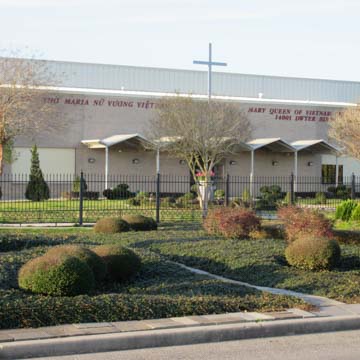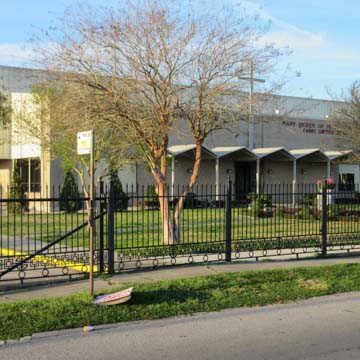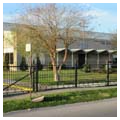In 1975, following the fall of Saigon when many South Vietnamese refugees came to the United States, New Orleans was one of the cities where they put down roots. Because many were Catholic, Catholic Charities facilitated their settlement. The immigrants first held services in a mobile home until they built a chapel in 1978. Mary Queen of Vietnam Parish was established in 1983, the first in the nation for a Vietnamese congregation; this church, consecrated in 1986, is a modernist design, square in form, with a shed roof that slopes gently toward the rear, and a one-story portico with a folded-plate roof carried on six slender columns. An education building was added in 1987. The neutral ground in front of the church in the center of Dwyer Boulevard has been landscaped with a parterre garden, and across Dwyer from the church is a community/cooperative vegetable garden.
The growth of the Vietnamese community in New Orleans has given rise to several new religious buildings. Among them is Our Lady of Lavang (6054 Vermillion Boulevard), designed by Louis Kong and consecrated in 1992. While the church building is plain, with two massive dormer clerestory windows illuminating the interior, the associated structures are particularly striking. The church grounds include a grotto and a pagoda sheltering a statue of Our Lady of Lavang.





